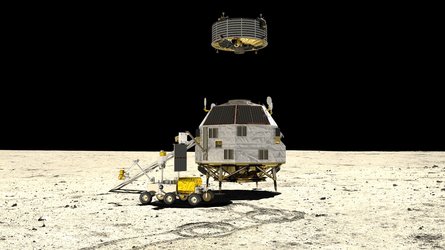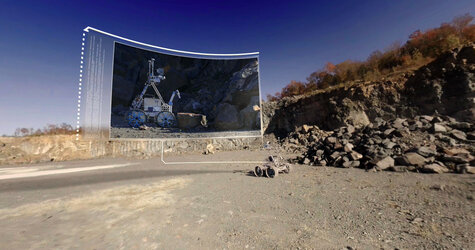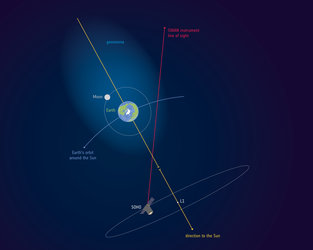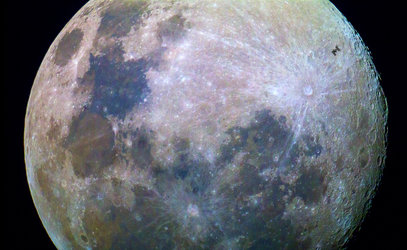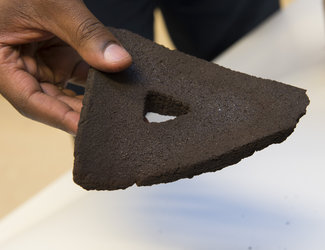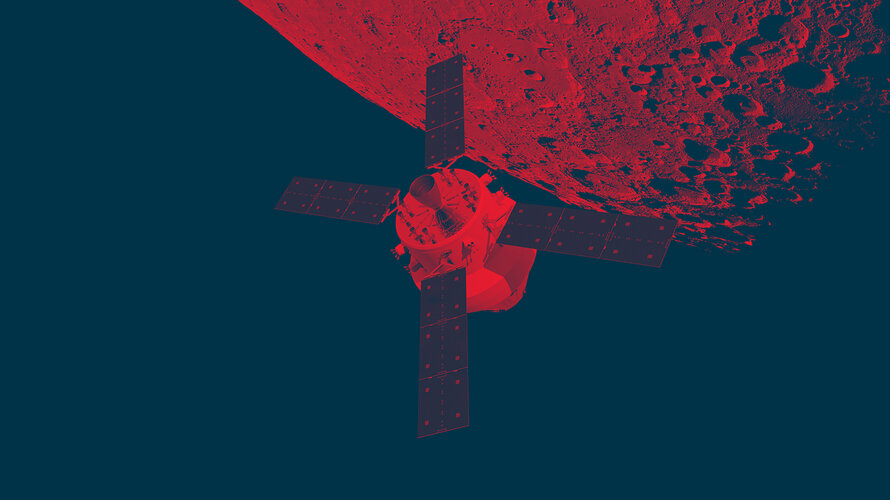Landing on the Moon and returning home: Heracles
The project in this article has been superseded by the European Large Logistics Lander and is no longer actual, it is left for archival purposes but is not updated.
ESA is working with the Canadian and Japanese space agencies to prepare the Heracles robotic mission to the Moon in the mid-to-late-2020s. Using the space Gateway as a halfway point, a robotic rover will scout the terrain in preparation for the future arrival of astronauts, and deliver lunar samples to Earth.

This mission offers the best and earliest chance to deliver Moon samples to Earth on NASA’s Orion spacecraft as early as its fourth or fifth mission.
Goals also include testing new hardware, demonstrating technology and gaining experience in operations while strengthening international partnerships in exploration.
A small lander with a rover inside weighing around 1800 kg in total will land and be monitored by astronauts from the Gateway. An ascent module will take off from the surface and return to the Gateway with samples taken by the rover.

Heracles will demonstrate these technologies and prove their value for humans. Later missions will include a pressurised rover driven by astronauts and an ascent module for the crew to return home.
Communications are key, with satellites providing high-speed networks to operate rovers from orbit, including feeding visuals from cameras, control signals to move the cameras, arms and wheels, and transmitting scientific data.
When the ascent module carrying the sample container arrives, the Gateway’s robotic arm will capture and berth it with the outpost’s airlock for unpacking and transfer of the container to Orion and subsequent flight to Earth with returning astronauts.
Heracles is an international programme to use the Gateway to the fullest and deliver samples to scientists on Earth using new technology that is more capable and lighter than previous missions.















 Germany
Germany
 Austria
Austria
 Belgium
Belgium
 Denmark
Denmark
 Spain
Spain
 Estonia
Estonia
 Finland
Finland
 France
France
 Greece
Greece
 Hungary
Hungary
 Ireland
Ireland
 Italy
Italy
 Luxembourg
Luxembourg
 Norway
Norway
 The Netherlands
The Netherlands
 Poland
Poland
 Portugal
Portugal
 Czechia
Czechia
 Romania
Romania
 United Kingdom
United Kingdom
 Slovenia
Slovenia
 Sweden
Sweden
 Switzerland
Switzerland





























